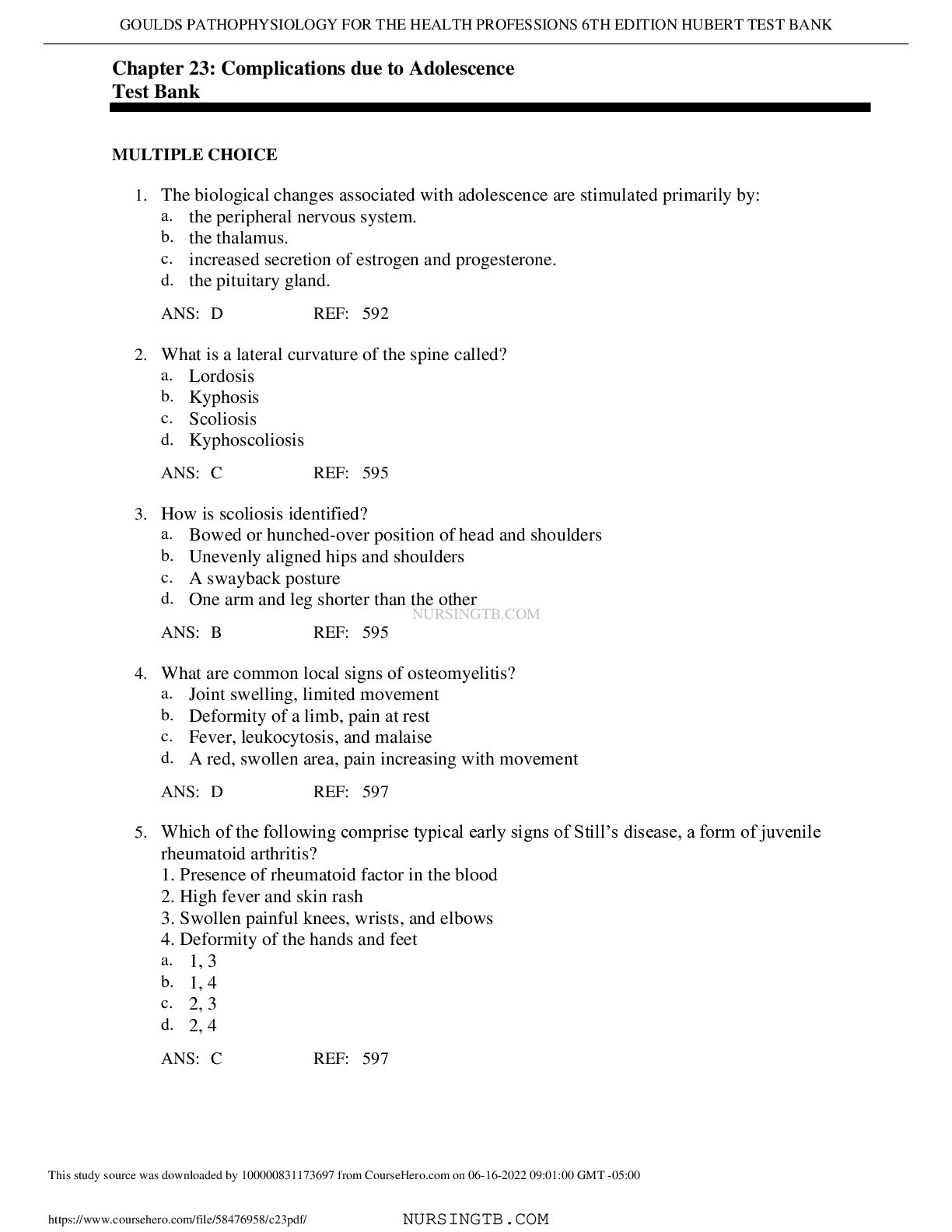All study resources > Chapter 23: Complications due to Adolescence Test Bank (Nursing)
Chapter 23: Complications due to Adolescence Test Bank
1. The biological changes associated with adolescence are stimulated primarily by: a. the peripheral nervous system. b. the thalamus. c. increased secretion of estrogen and progesterone. d. the pituitary gland. 2. What is a lateral curvature of the spine called? a. Lordosis b. Kyphosis c. Scoliosis d. Kyphoscoliosis 3. How is scoliosis identified? a. Bowed or hunched-over position o ...[Show More]
Preview 1 out of 3 pages
Purchase now to view full document
Document details
Subject:
Nursing
Category:
Test Banks
Number of pages:
3
Language:
English
Last Update:
3 years ago
